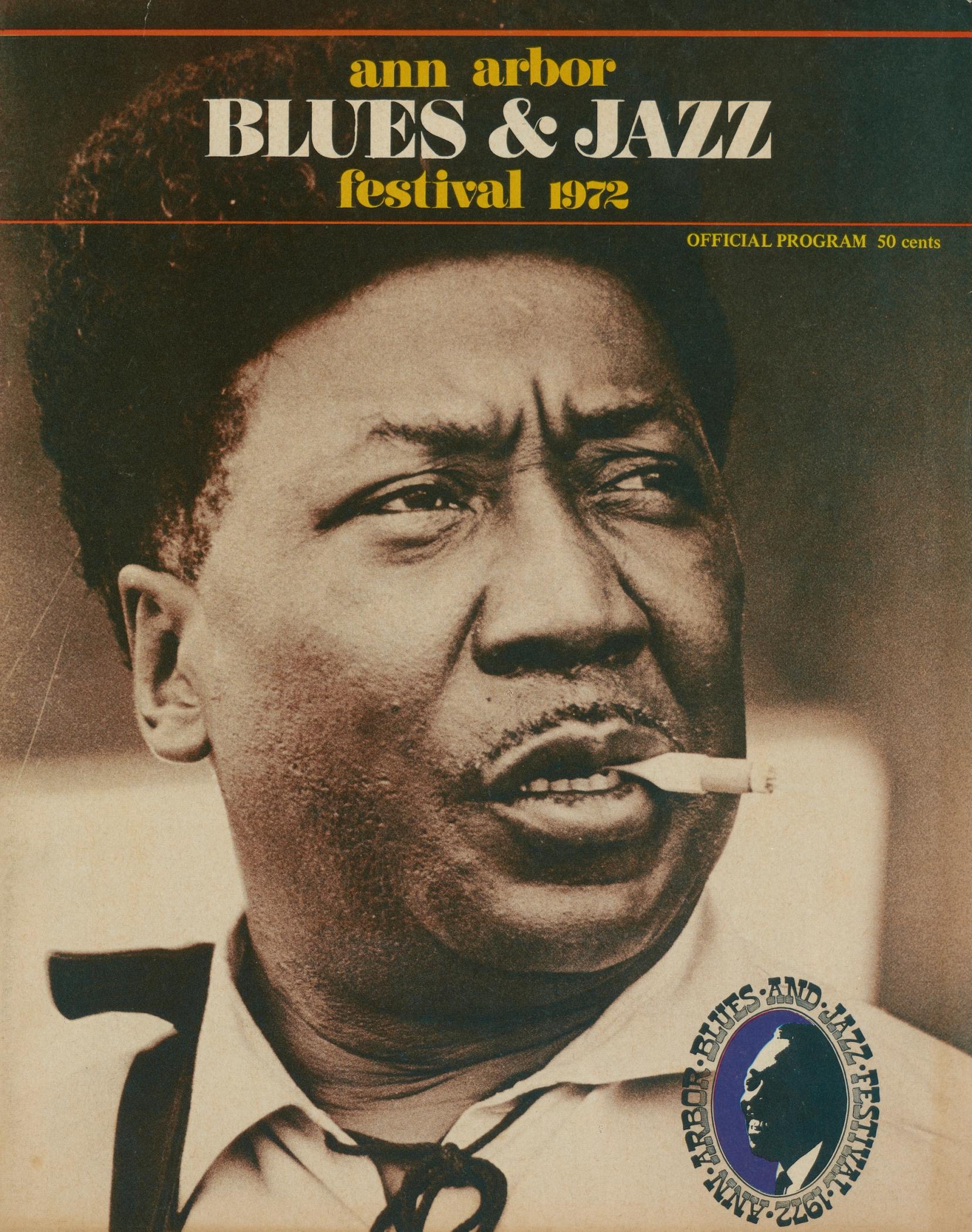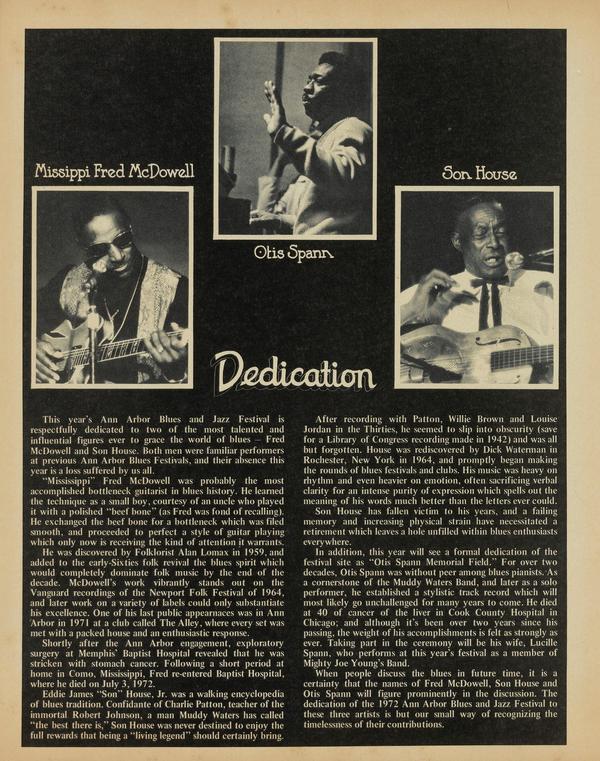
Dedication
This year’s Ann Arbor Blues and Jazz Festival is respectfully dedicated to two of the most talented and influential figures ever to grace the world of blues — Fred McDowell and Son House.
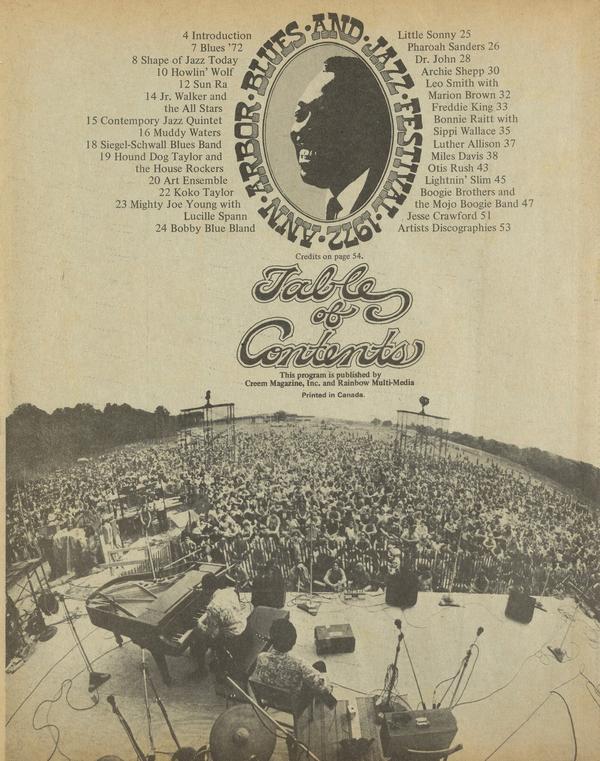
Table of Contents
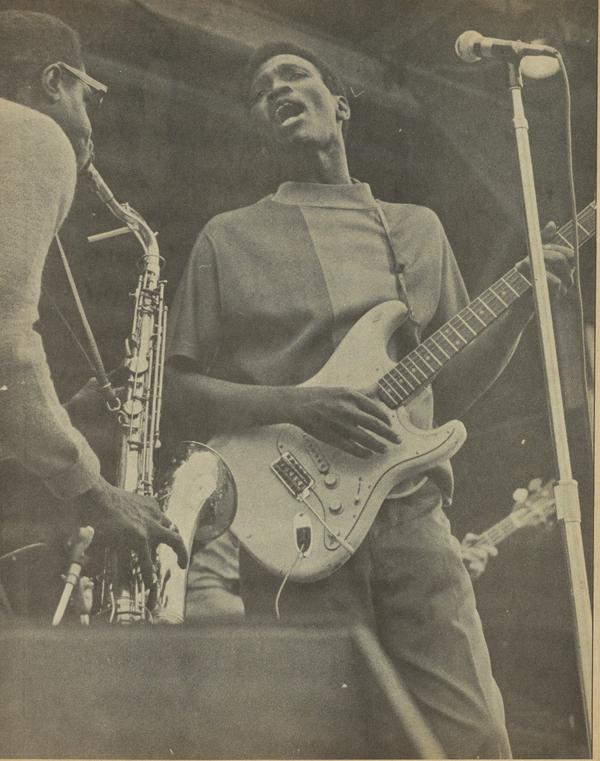
Introduction
As the producers of the Ann Arbor Blues & Jazz Festival 1972, The Rainbow Multi-Media Corporation is proud to welcome you to Otis Spann Memorial Field, Ann Arbor, and three days of the most exciting blues and jazz music we were able to arrange for this weekend.

BLUES 1972
Tony Glover
Good evening blues, blues how do you do? I did pretty good in the 50’s, but now it’s 72.

The Shape of Jazz Today
Lester Bangs
To really get at the state of jazz in 1972, we have to start by getting rid of “jazz.”

HOWLIN’ WOLF
Ben Edmonds
“Howlin’ Wolf, man... he’s the guts of America spilling out on the floor, that’s all.”

SUNRA AND HIS MYTH-SCIENCE ARKESTRA
John Sinclair
The stage is set with what seems like thousands of strange instruments — weird saxophones and reeds, an infinity of various drums, space implements which appear capable of making any sound ever heard or dreamed of — and it’s even stranger when the musicians walk out to take their places.

JR. WALKER AND THE ALL STARS
Robert Palmer
“Shotgun” was much more than one of the most danceable records of all time.
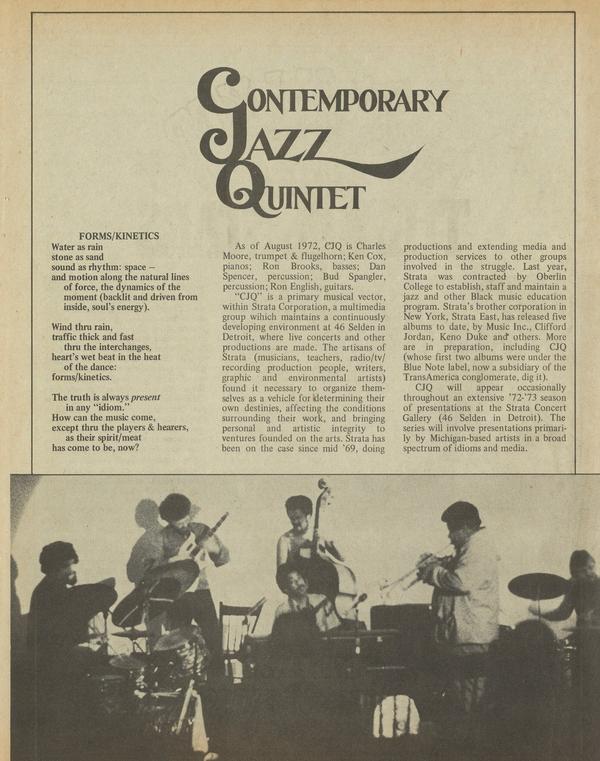
CONTEMPORARY JAZZ QUINTET
As of August 1972, CJQ is Charles Moore, trumpet & flugelhorn; Ken Cox, pianos; Ron Brooks, basses; Dan Spencer, percussion; Bud Spangler, percussion; Ron English, guitars. “CJQ” is a primary musical vector, within Strata Corporation, a multimedia group wihich maintains a continuously developing environment at 46 Selden in Detroit, where live concerts and other productions are made.
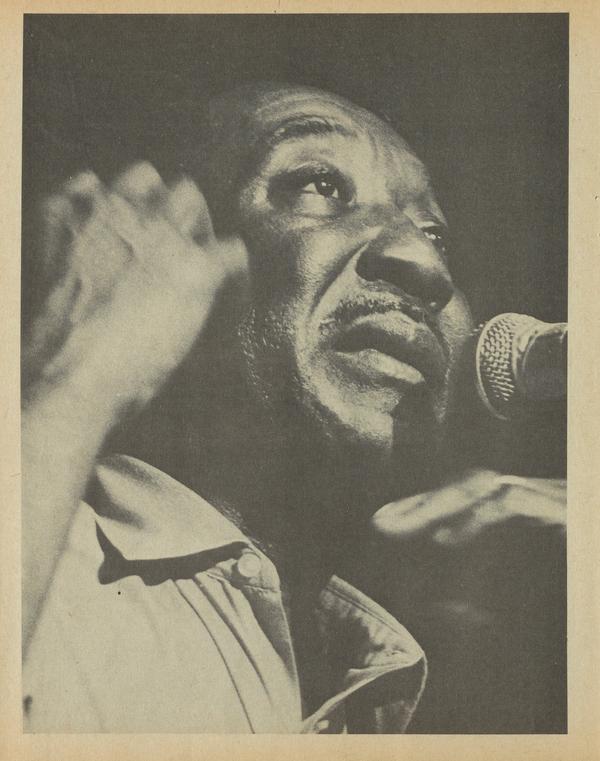
MUDDY WATERS
Tony Glover
Muddy Waters is not just a Chicago bluesman, he is the Chicago Bluesman.
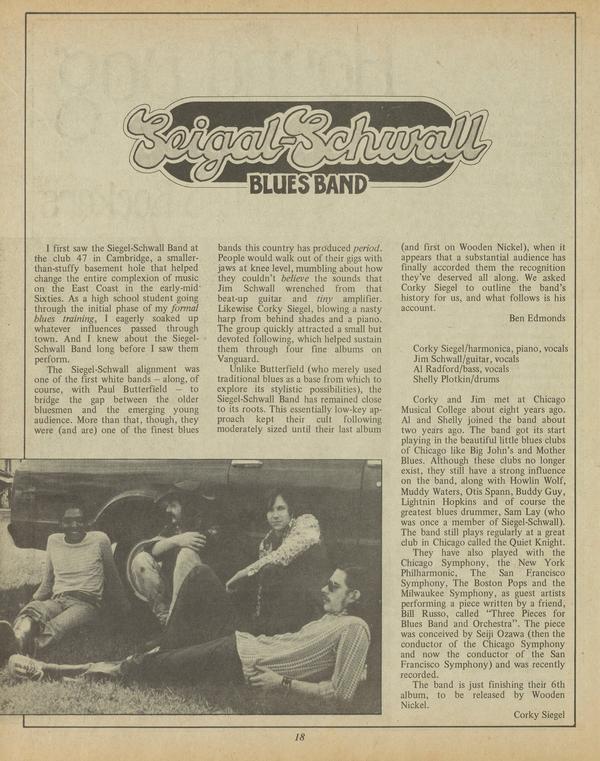
Seigal-Schwall BLUES BAND
Ben Edmonds
The Siegel-Schwall alignment was one of the first white bands — along, of course, with Paul Butterfield — to bridge the gap between the older bluesmen and the emerging young audience.
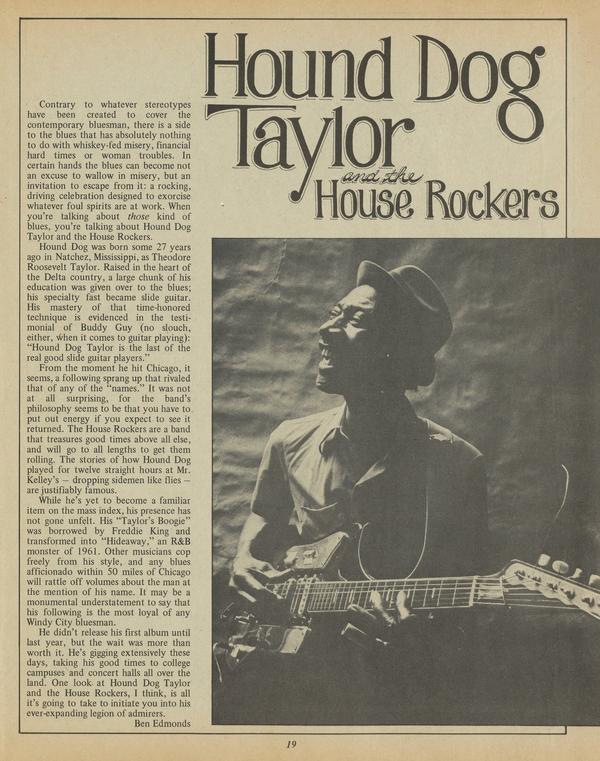
Hound Dog Taylor and the House Rockers
Ben Edmonds
In certain hands the blues can become not an excuse to wallow in misery, but an invitation to escape from it.
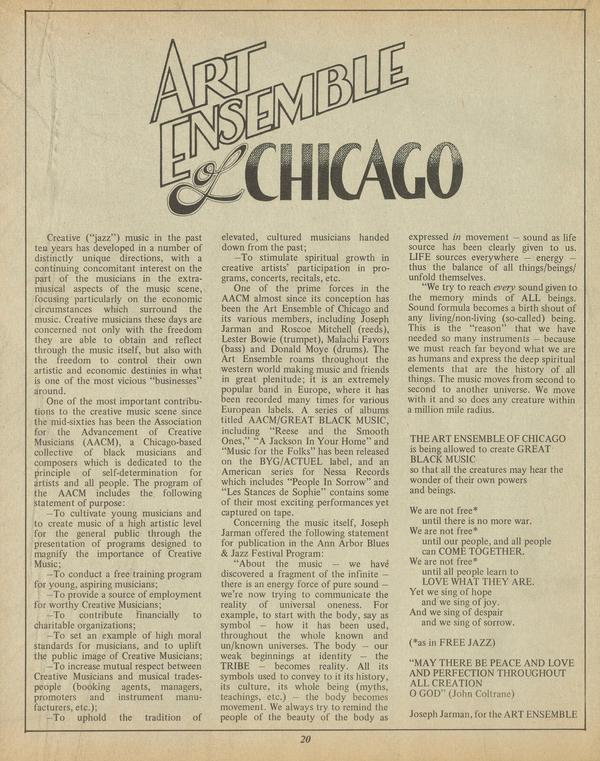
ART ENSEMBLE OF CHICAGO
Creative (“jazz”) music in the past ten years has developed in a number of distinctly unique directions.
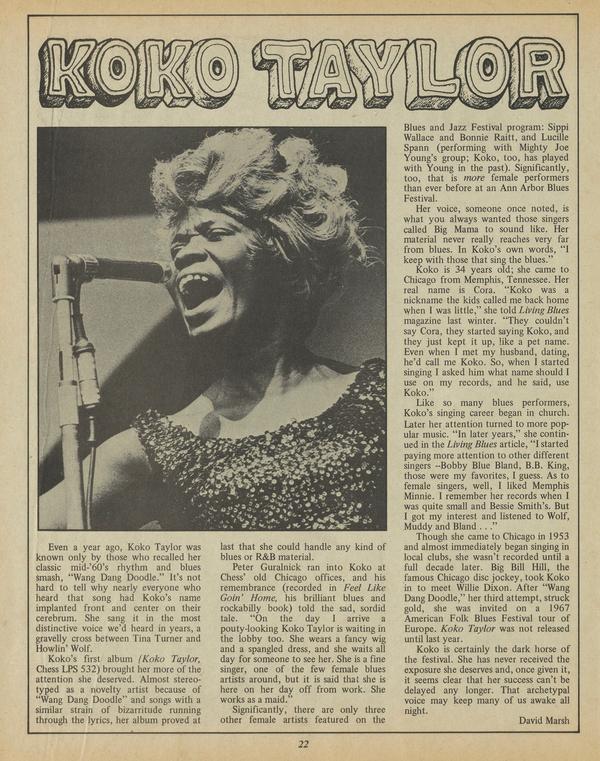
KOKO TAYLOR
David Marsh
A gravelly cross between Tina Turner and Howlin’ Wolf.

MIGHTY JOE YOUNG LUCILLE SPANN
I, for one, have maintained stoutly in the past few years that Mighty Joe Young is one of the Midwest’s most gifted and conclusive guitarists, and certainly Chicago’s best.
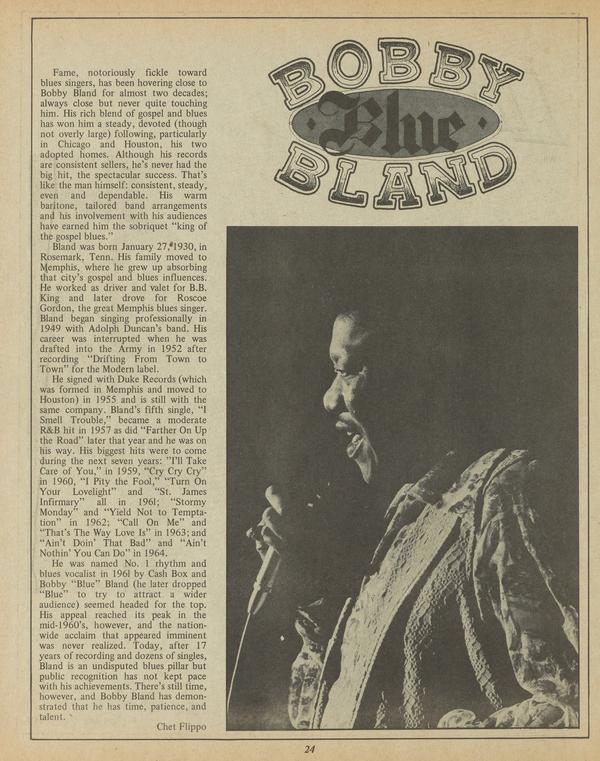
BOBBY BLUE BLAND
Chet Flippo
Fame, notoriously fickle toward blues singers, has been hovering close to Bobby Bland for almost two decades; always close but never quite touching him.
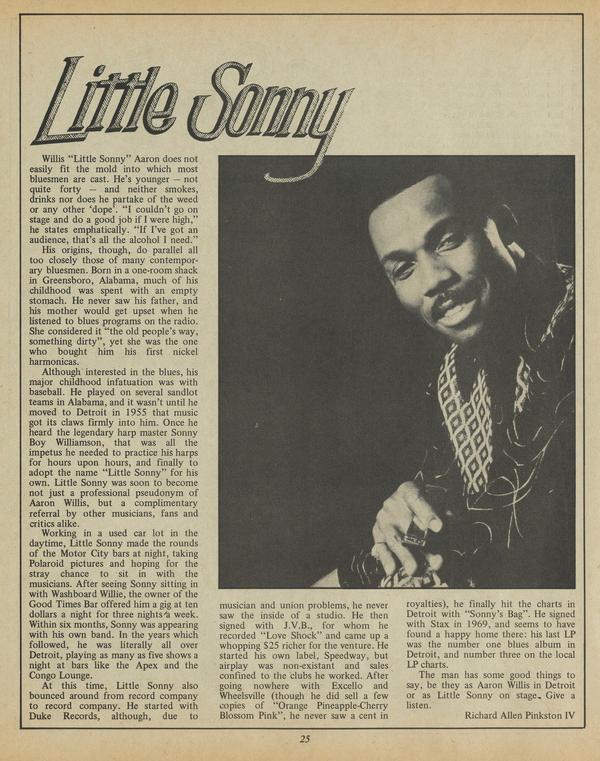
LITTLE SONNY
Richard Allen Pinkston IV
“I couldn’t go on stage and do a good job if I were high,” he states emphatically.
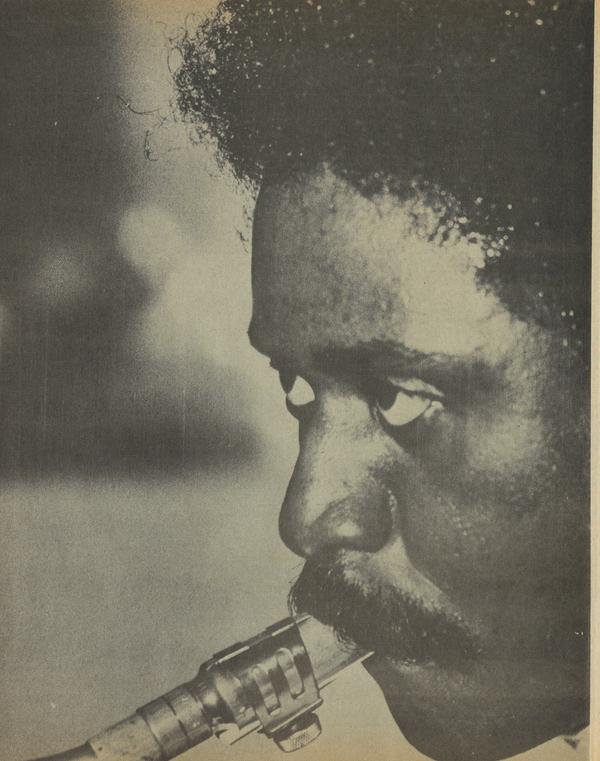
PHAROAH SANDERS
Lester Bangs
Pharoah Sanders was talking about a familiar component of Hindu religion and a personal element of his spiritual life, but he could just as easily have been talking about his music.

DR JOHN
Dave Marsh
To think that Doctor John is the most important persona Mac Rebennack possesses is to miss the point entirely.
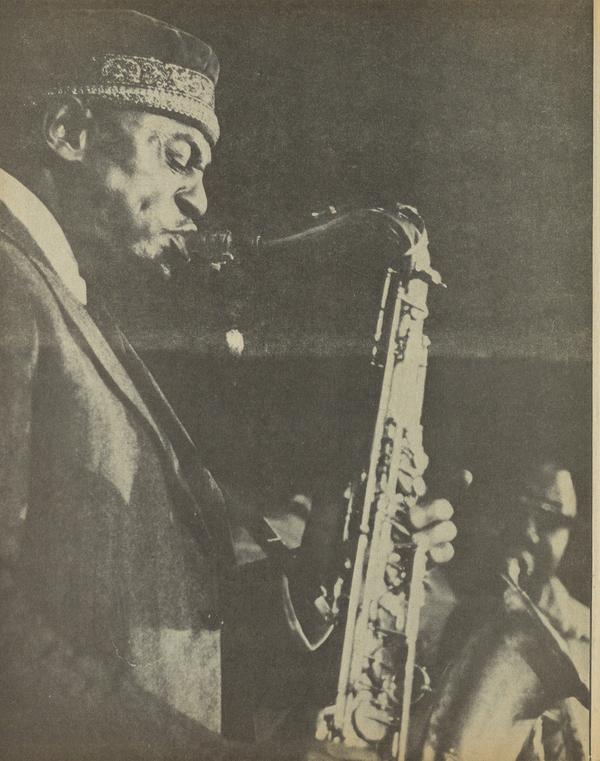
ARCHIE SHEPP
Nick Tosches
Archie Shepp’s music doesn’t fuck around.
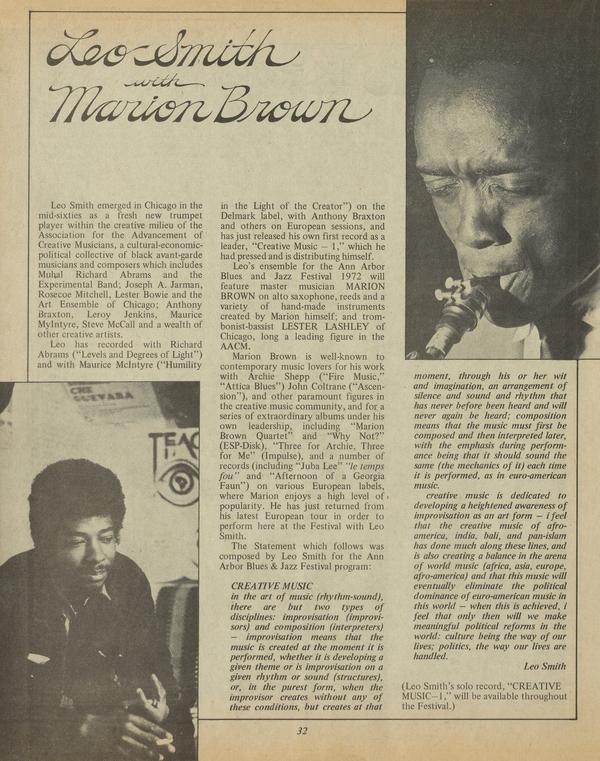
Leo Smith with Marion Brown
Leo Smith
Leo Smith emerged in Chicago in the mid-sixties as a fresh new trumpet player within the creative milieu of the Association for the Advancement of Creative Musicians.
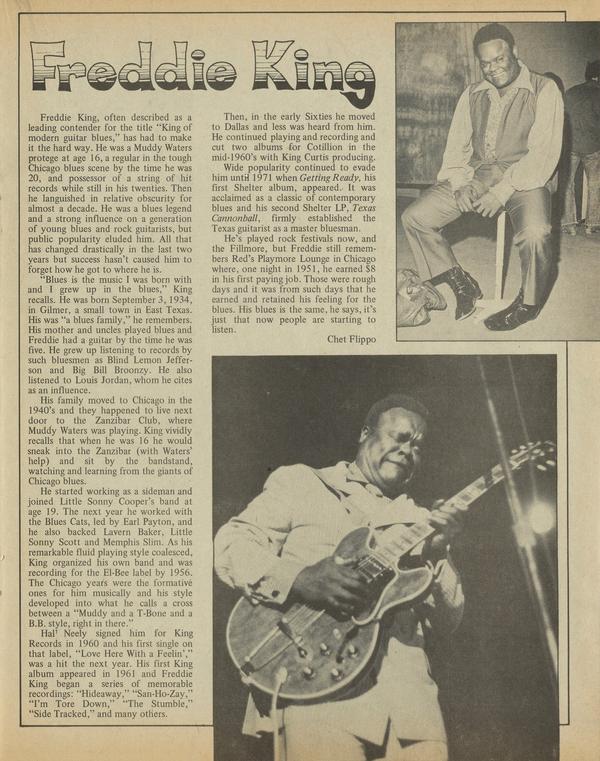
Freddie King
Chet Flippo
Freddie King, often described as a leading contender for the title “King of modern guitar blues,” has had to make it the hard way.
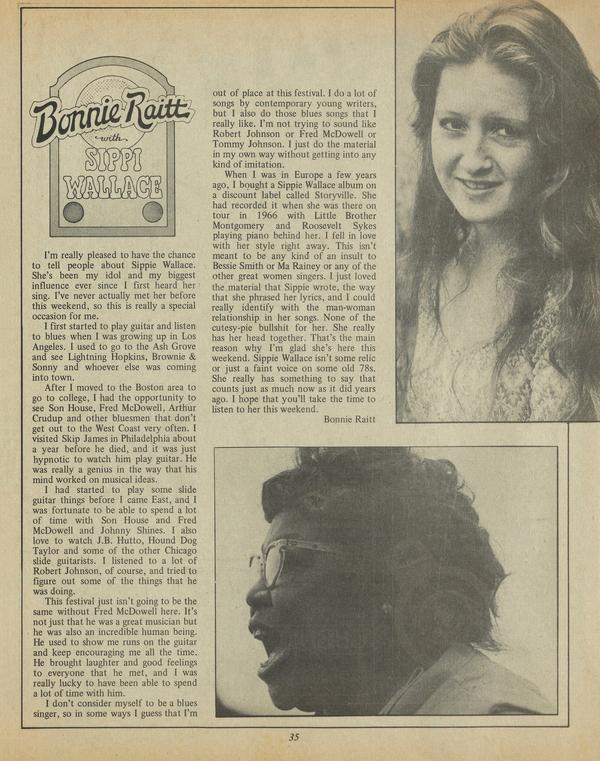
Bonnie Raitt with SIPPI WALLACE
Bonnie Raitt
I’m really pleased to have the chance to tell people about Sippie Wallace.
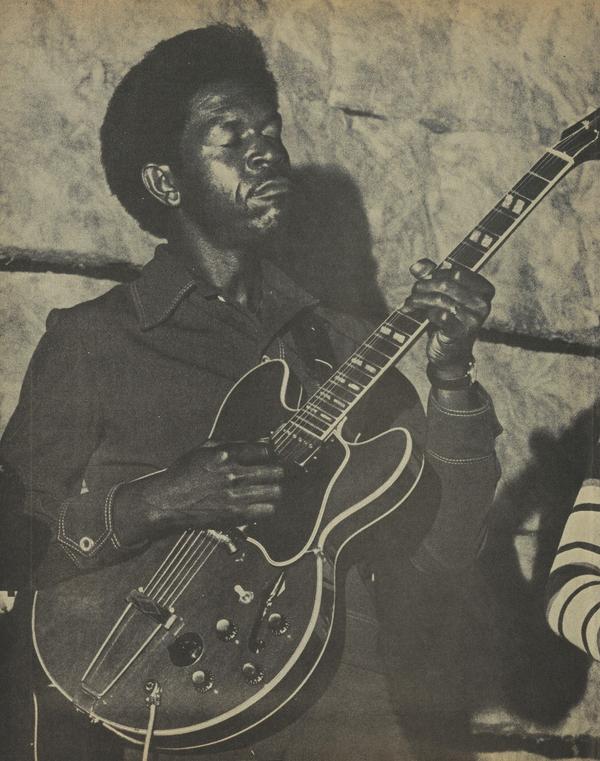
LUTHER ALLISON
Dave Marsh
Luther Allison come into the picture about the middle of 1957.
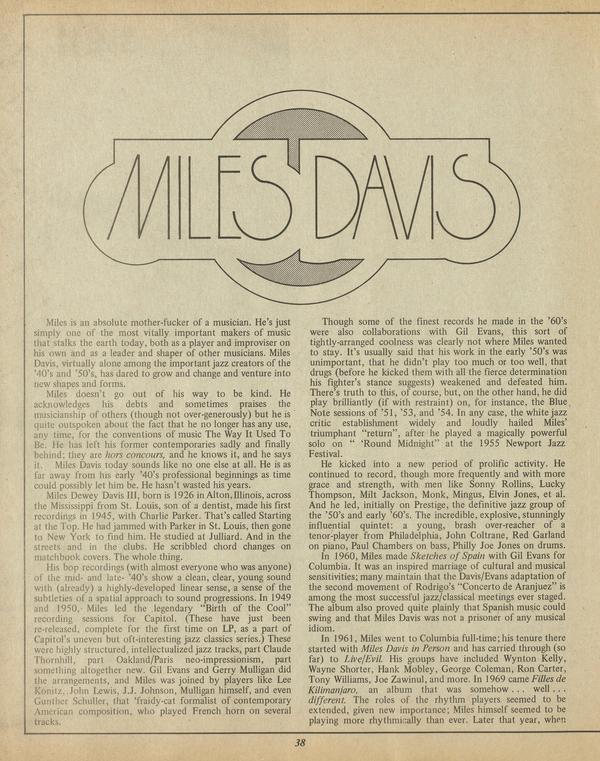
MILES DAVIS
Colman Andrews
Miles is an absolute mother-fucker of a musician.
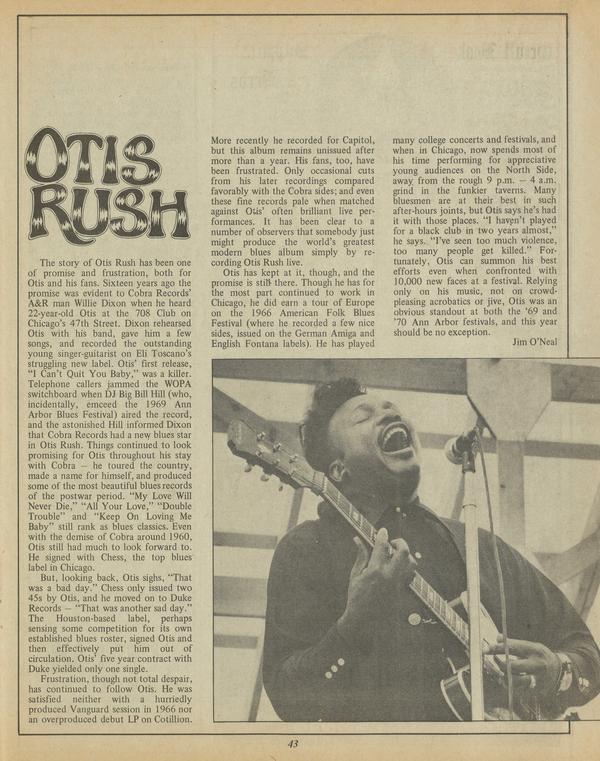
OTIS RUSH
Jim O’Neal
The story of Otis Rush has been one of promise and frustration, both for Otis and his fans.
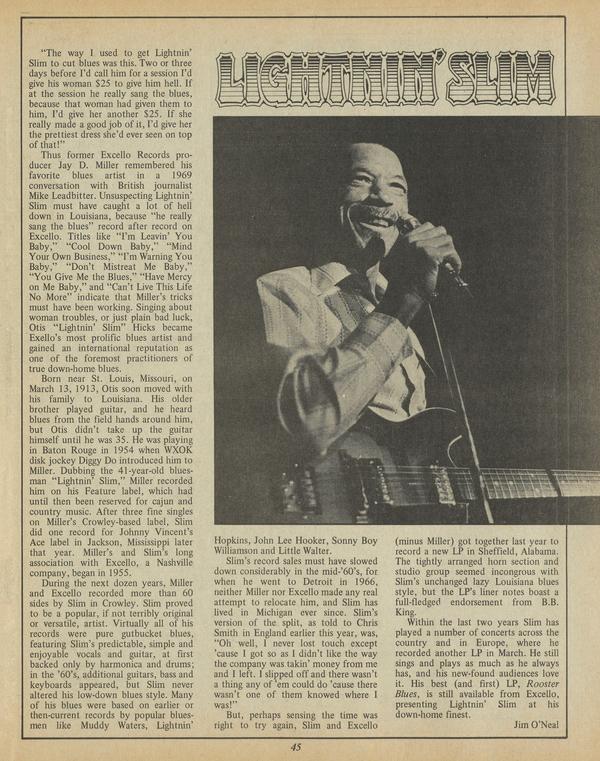
LIGHTNIN’ SLIM
Jim O’Neal
“The way I used to get Lightnin’ Slim to cut blues was this. Two or three days before I’d call him for a session I’d give his woman $25 to give him hell.”
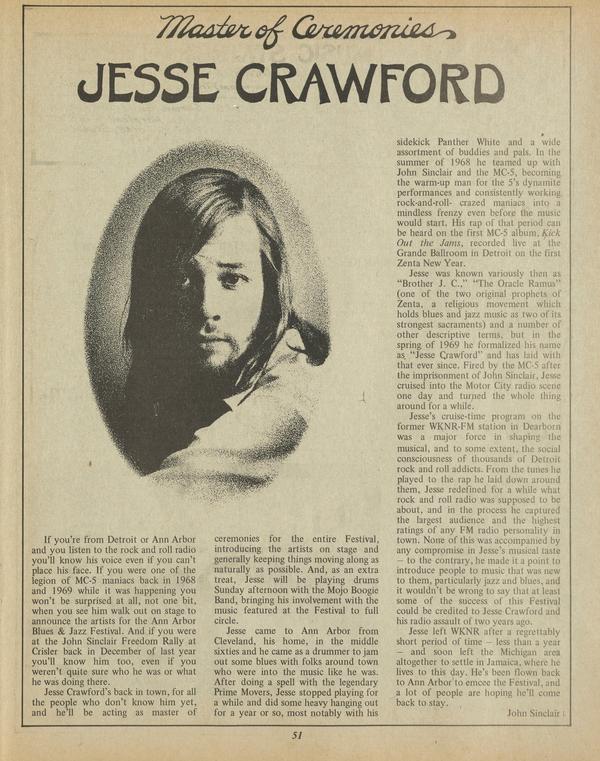
Master of Ceremories JESSE CRAWFORD
John Sinclair
If you’re from Detroit or Ann Arbor and you listen to the rock and roll radio you’ll know his voice even if you can’t place his face.
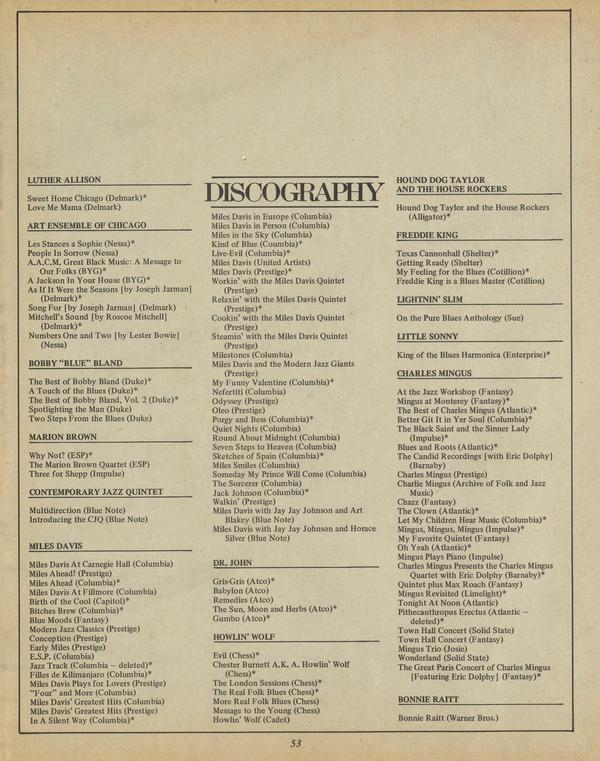
DISCOGRAPHY
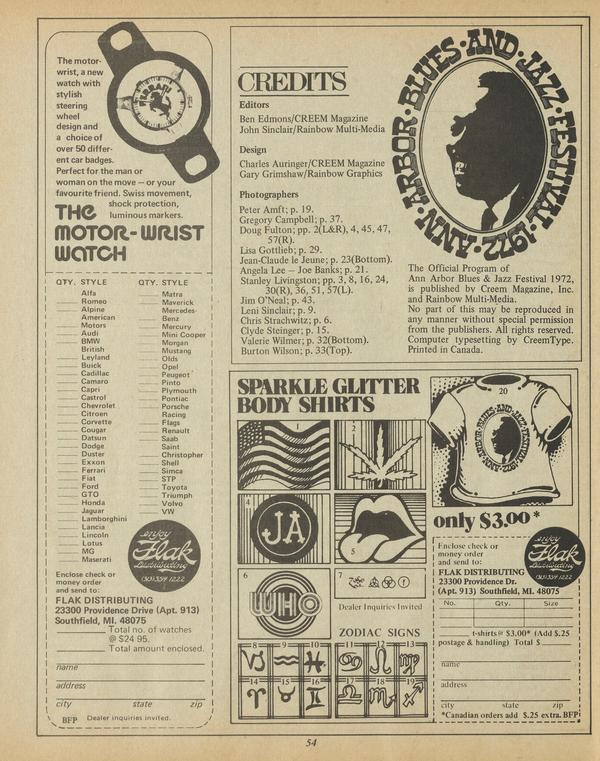
CREDITS


